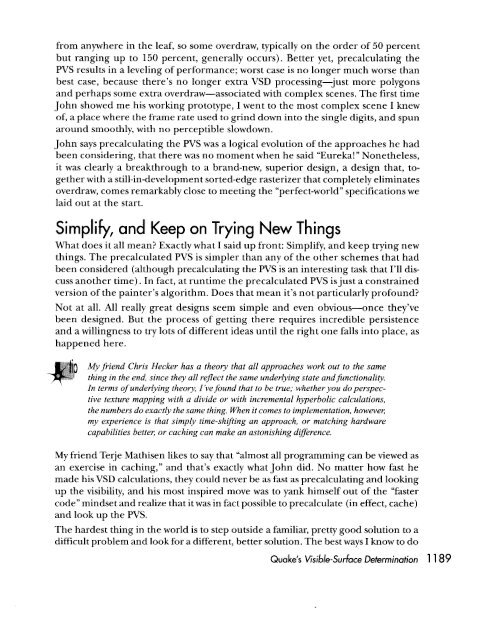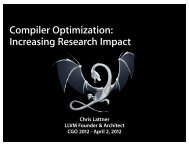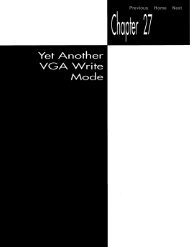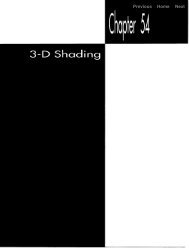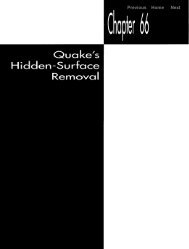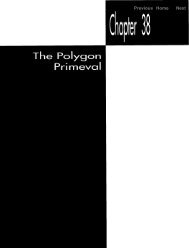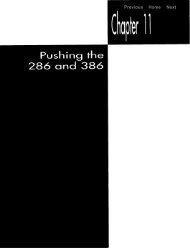quake's visible-surface determination - GameDev.net
quake's visible-surface determination - GameDev.net
quake's visible-surface determination - GameDev.net
Create successful ePaper yourself
Turn your PDF publications into a flip-book with our unique Google optimized e-Paper software.
from anywhere in the leaf, so some overdraw, typically on the order of 50 percentbut ranging up to 150 percent, generally occurs). Better yet, precalculating thePVS results in a leveling of performance; worst case is no longer much worse thanbest case, because there’s no longer extra VSD processing-just more polygonsand perhaps some extra overdraw-associated with complex scenes. The first timeJohn showed me his working prototype, I went to the most complex scene I knewof, a place where the frame rate used to grind down into the single digits, and spunaround smoothly, with no perceptible slowdown.John says precalculating the PVS was a logical evolution of the approaches he hadbeen considering, that there was no moment when he said “Eureka!” No<strong>net</strong>heless,it was clearly a breakthrough to a brand-new, superior design, a design that, togetherwith a still-in-development sorted-edge rasterizer that completely eliminatesoverdraw, comes remarkably close to meeting the “perfect-world’’ specifications welaid out at the start.Simplify, and Keep on Trying New ThingsWhat does it all mean? Exactly what I said up front: Simplify, and keep trying newthings. The precalculated PVS is simpler than any of the other schemes that hadbeen considered (although precalculating the PVS is an interesting task that I’ll discussanother time). In fact, at runtime the precalculated PVS is just a constrainedversion of the painter’s algorithm. Does that mean it’s not particularly profound?Not at all. All really great designs seem simple and even obvious-once they’vebeen designed. But the process of getting there requires incredible persistenceand a willingness to try lots of different ideas until the right one falls into place, ashappened here.pMy friend Chris Hecker has a theory that all approaches work out to the samething in the end, since they all reflect the same underlying state and functionali@.In terms of underlying theory, I’ve found that be to true; whether you do perspectivetexture mapping with a divide or with incremental hyperbolic calculations,the numbers do exactly the same thing. When it comes to implementation, however,my experience is that simply time-shifting an approach, or matching hardwarecapabilities better, or caching can make an astonishing difference.My friend Terje Mathisen likes to say that “almost all programming can be viewed asan exercise in caching,” and that’s exactly what John did. No matter how fast hemade his VSD calculations, they could never be as fast as precalculating and lookingup the visibility, and his most inspired move was to yank himself out of the “fastercode” mindset and realize that it was in fact possible to precalculate (in effect, cache)and look up the PVS.The hardest thing in the world is to step outside a familiar, pretty good solution to adifficult problem and look for a different, better solution. The best ways I know to doQuake‘s Visible-Surface Determination 1 1 89


